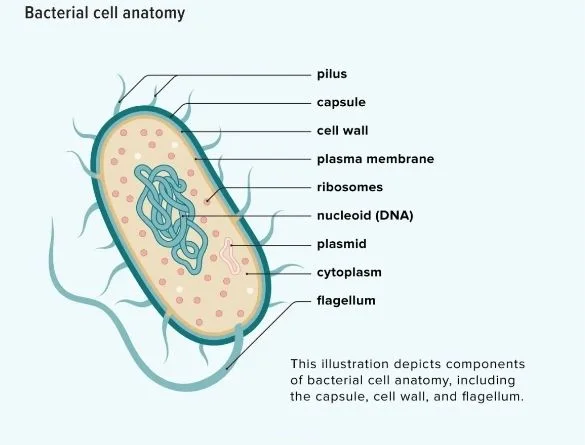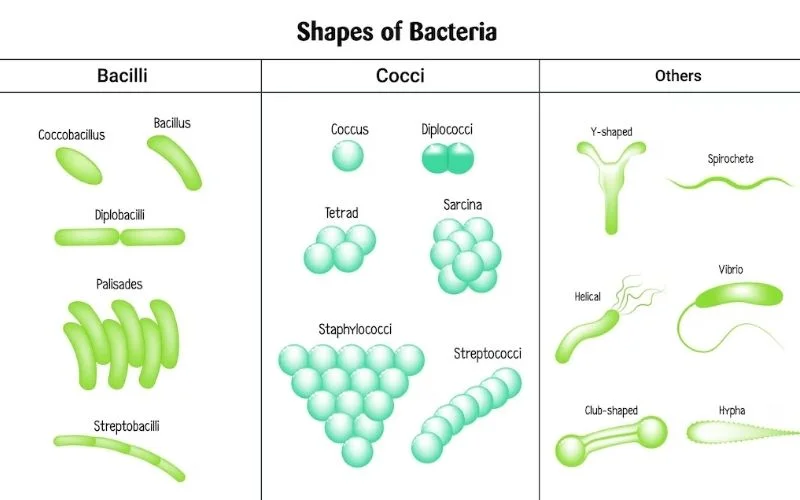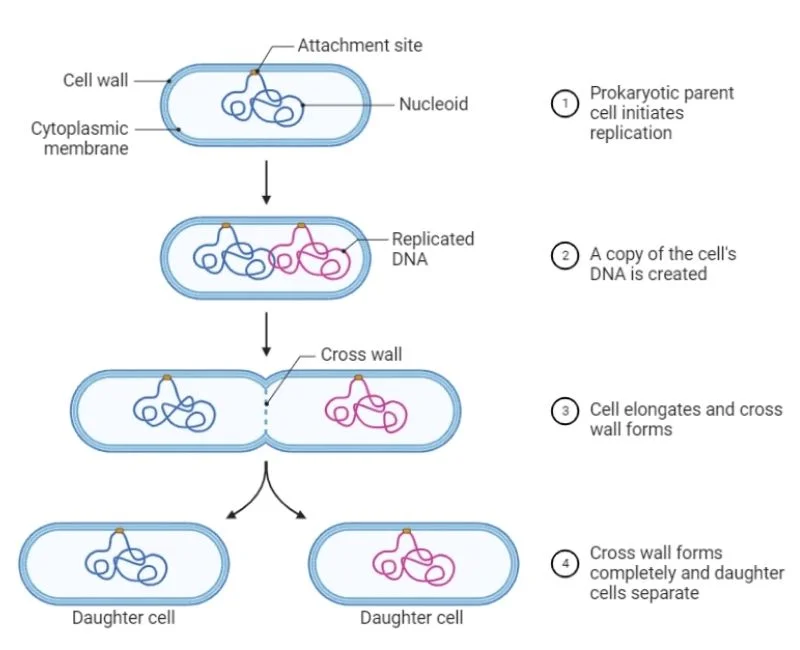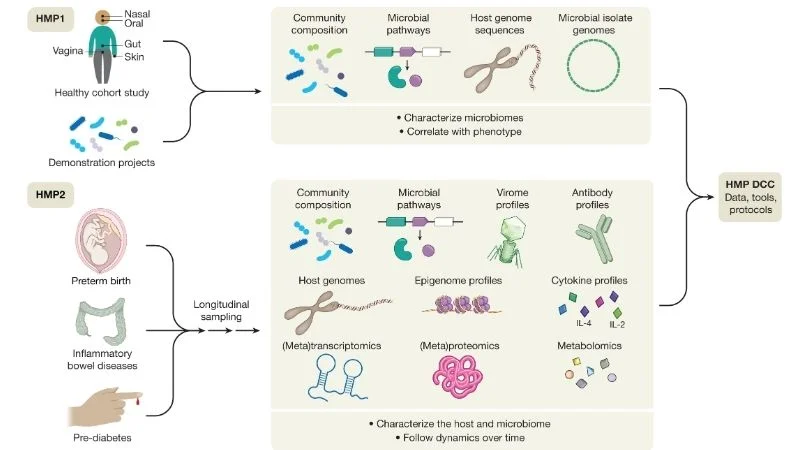
Bacteria, the microscopic organisms that have inhabited Earth for approximately 4 billion years, are among the most diverse and abundant life forms on our planet. Scientists estimate that the Earth holds at least 5 nonillion bacteria, with much of the Earth's biomass thought to be composed of these microscopic organisms. A single gram of soil typically contains about 40 million bacterial cells, while a milliliter of fresh water usually holds about one million bacterial cells.
What Are Bacteria and Their Basic Structure?
Bacteria are prokaryotic microorganisms, distinct from both plants and animals in their cellular organization. These single-celled organisms lack a membrane-bound nucleus and other organized internal structures common in more complex cells. Unlike eukaryotic cells found in plants and animals, bacterial cells maintain a simpler yet highly efficient structure that has allowed them to thrive in virtually every environment on Earth, from deep ocean vents to arctic ice and even radioactive waste.

What Are Bacteria?
The basic structure of a bacterial cell includes several key components:
- Cell Wall: Composed of peptidoglycan, this outer layer gives bacteria their shape and provides structural support. The cell wall is particularly important in determining whether bacteria are gram-positive or gram-negative.
- Plasma Membrane: Located beneath the cell wall, this component generates energy and transports chemicals. The membrane is permeable, allowing specific substances to pass through it.
- Cytoplasm: A gelatinous substance inside the plasma membrane that contains the cell's genetic material and ribosomes. This is where most cellular activities happen.
- Nucleoid: Contains the bacterial DNA, floating freely within the cytoplasm in a twisted, thread-like mass. Some bacteria also possess plasmids, which are separate circular pieces of DNA that often carry genes for antibiotic resistance.
- Ribosomes: These complex particles are made up of RNA-rich granules and are responsible for protein synthesis. Some antibiotics, like tetracycline, specifically target bacterial ribosomes to prevent protein synthesis.
- Optional Structures:
- Capsule: An additional protective layer found in some bacteria that helps them attach to surfaces and resist host immune responses
- Flagella: Whip-like appendages used for movement, allowing bacteria to swim toward nutrients or away from harmful substances
- Pili: Hair-like structures that aid in attachment to surfaces and transfer of genetic material between cells
A Taxonomy of Bacterial Species
Scientists classify bacteria using several different criteria, creating a comprehensive system for understanding these diverse organisms. These classification methods help researchers identify bacteria and predict their behavior in different environments.
Classification by Shape
- Cocci (Spherical): Examples include Streptococcus, responsible for strep throat, and Staphylococcus, which can cause various infections. These bacteria often appear in clusters or chains, forming distinctive patterns visible under a microscope.
- Bacilli (Rod-shaped): Examples include Bacillus anthracis, which causes anthrax, and Lactobacillus acidophilus, beneficial bacteria found in yogurt. These bacteria can vary in length and may be straight or slightly curved.
- Spirilla/Spirochetes (Spiral): Examples include bacteria causing Lyme disease and syphilis. These bacteria feature either tight or loose coils, allowing them to move efficiently through liquid environments.

Types of Bacteria
Gram staining’s classification
- Gram-positive Bacteria: These bacteria lack an outer membrane and retain crystal violet dye during Gram staining, appearing purple-blue under microscopic examination. Examples include Corynebacterium, Clostridium, and Listeria, which have thicker cell walls containing more peptidoglycan.
- Gram-negative Bacteria: These bacteria possess an outer membrane and appear pink-red under Gram staining. Examples include Pseudomonas, Proteus, and Klebsiella. Their cell walls are more complex and often more resistant to certain antibiotics.
Classification by their oxygen tolerance
- Aerobes: These bacteria require oxygen for growth and are commonly found in environmental settings. They can cause problems in human environments, such as corrosion and water quality issues.
- Anaerobes: These bacteria cannot survive in oxygen's presence and are typically found in the human gastrointestinal tract. They can cause serious infections like gas gangrene, tetanus, and botulism.
- Facultative Anaerobes: These versatile bacteria can grow with or without oxygen but prefer environments containing oxygen. They are found in soil, water, vegetation, and as part of the normal flora of humans and animals. Salmonella is a particularly notable example.
Bacterial reproduction and its adaptive mechanisms
Bacteria primarily reproduce through binary fission, where one cell grows and divides into two identical daughter cells. During this process, the bacterial cell duplicates its DNA and cellular content before splitting into two new cells. This efficient reproduction method allows bacterial populations to grow rapidly under favorable conditions, sometimes doubling every 20 minutes.
Additionally, bacteria can acquire new genetic material through three main processes:
- Conjugation: Direct cell-to-cell transfer of genetic material through a tube-like structure called a pilus. This process is particularly important in spreading antibiotic resistance genes.
- Transformation: Bacteria can absorb short DNA fragments from their environment, usually released by other bacteria. This process occurs when bacteria are in a state called competence, often triggered by nutrient scarcity.
- Transduction: In this process, viruses transfer DNA between bacteria, acting as vectors for genetic exchange. This mechanism plays a role in bacterial evolution and adaptation.

Bacterial reproduction and its adaptive mechanisms
Benefits of Bacteria to Human Health and Environment
Despite their reputation for causing disease, many bacteria provide essential benefits to human health and the environment. Scientists estimate that there are about 10 times as many bacterial cells as human cells in the human body.
Human Health Benefits
Digestive System:
- Break down complex nutrients that human digestive enzymes cannot process
- Be a source of vital vitamins and nutrients
- Maintain gut health by preventing the growth of harmful bacteria
- Create beneficial byproducts like lactic acid that help maintain proper pH levels
Skin Health:
- Create protective barriers against harmful microorganisms
- Create antimicrobials to suppress pathogenic microbes.
- Maintain proper pH balance on the skin surface
Environmental Benefits
Nitrogen Fixation:
- Convert atmospheric nitrogen into forms that plants can use
- Enhance plant growth through mutually beneficial partnerships.
- Preserve soil fertility by recycling nitrogenous substances.
Decomposition:
- Break down organic matter and replenish the ecosystem with nutrients.
- Clean up environmental pollution and oil spills.
- Help in waste processing and environmental cleanup
Industrial Applications
Food Production:
- Fermentation processes for products like cheese, yogurt, and pickles
- Probiotic production for supplementation
- Creation of soy sauce and other fermented foods
Biotechnology:
- Antibiotic production through bacterial fermentation
- Enzyme synthesis for industrial processes
- Treating waste and remediating through biological processes.
Bacterial Challenges and Medical Significance
While many bacteria are beneficial, some pose significant health challenges that require medical attention and ongoing research to address.
Common Bacterial Infections
Respiratory Infections:
- Streptococcus bacteria are the etiological agent of strep throat.
- Pneumonia from various bacterial species
- Tuberculosis is a disease brought on by Mycobacterium tuberculosis.
Gastrointestinal Infections:
- Infections with E. coli due to contaminated food or water
- Salmonella is the causative agent of food poisoning
- Cholera caused by Vibrio cholerae, affecting thousands globally
Antibiotic Resistance
The emergence of antibiotic-resistant bacteria represents one of the most significant challenges in modern medicine. According to the CDC, at least 2 million people in the United States are infected with antibiotic-resistant bacteria annually, resulting in approximately 23,000 deaths. MRSA (Methicillin-resistant Staphylococcus aureus) serves as a prime example of how bacteria can adapt to resist traditional treatments.
Latest Findings and Their Future Impact
Recent scientific advances have revealed new aspects of bacterial life and potential applications for addressing global challenges.
Plastic-eating Bacteria:
- Discovery of Ideonella sakaiensis in 2016 near a recycling facility in Osaka, Japan
- This bacterium produces two specific enzymes that can break down PET plastic
- Represents a potential solution for addressing plastic pollution

Plastic-eating Bacteria
Microbiome Research:
- A deepening understanding of the gut-brain axis and its effects on mental health.
- Role of bacteria in immune system development and function
- Impact on diverse areas of human health and illness.

Microbiome Research
Conclusion
Bacteria represent a fascinating and essential component of life on Earth, demonstrating remarkable diversity and adaptability across countless environments. Their impact on human health, environmental processes, and industrial applications continues to drive scientific research and technological innovation. As our understanding of these microscopic organisms grows, we discover new ways to harness their beneficial properties while addressing the challenges posed by harmful species. The continued study of bacteria remains crucial for advancing medical treatments, improving industrial processes, and developing solutions to global environmental challenges.
Related Articles
Clear Water in a Flash: The Magic of Pool Flocculant
Maintaining a pristine swimming pool can be challenging, especially when dealing with persistent ...
Alum Treatment for Cleaner Lakes and Ponds
In the realm of water quality management, alum treatment has emerged as a highly effective method ...
How Pool Flocculant Works and When to Use It
Keeping pool water clean and clear is a priority but sometimes regular maintenance isn’t enough to ...
The Role of Bacteria in Pond Health
Clear, healthy pond water isn't just a matter of luck – it's the result of countless microscopic ...
Essential Pond Treatments for a Healthy Ecosystem
A well-maintained pond creates a stunning focal point in any landscape while providing a thriving ...
Role of Ammonia in Everyday Cleaning and Industrial Applications
Ammonia is a versatile and widely used chemical compound with a significant role in both everyday ...






